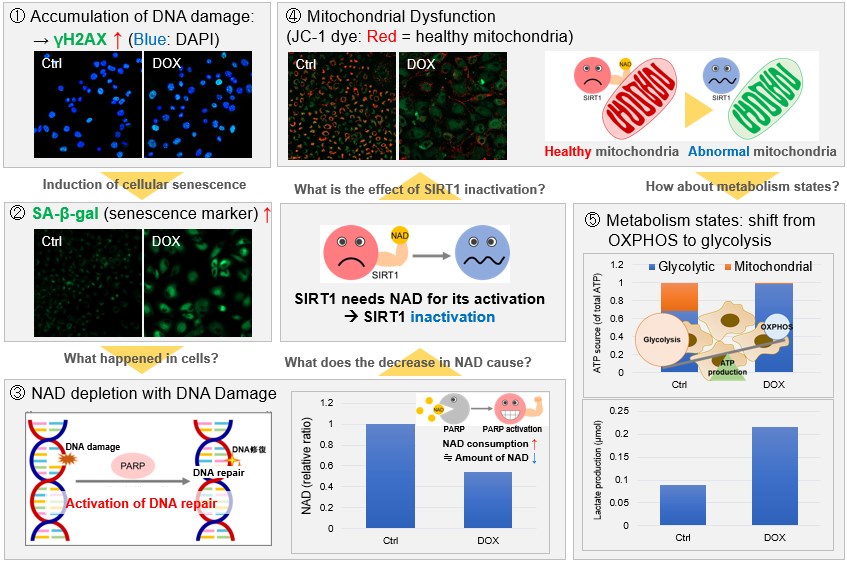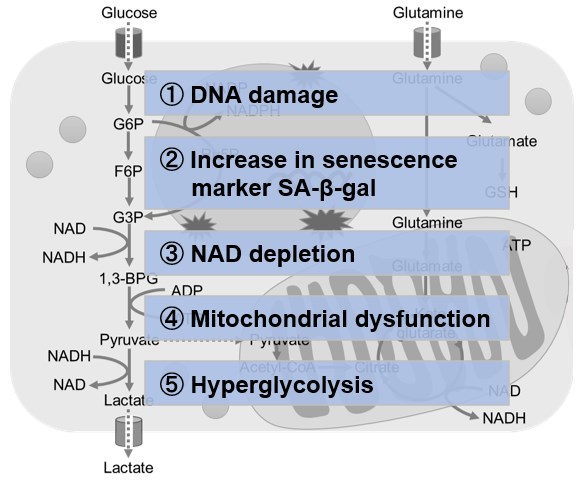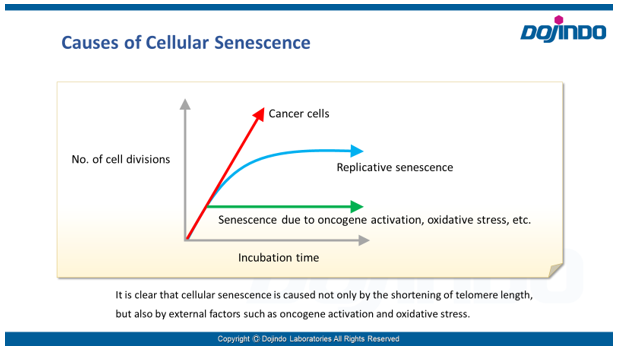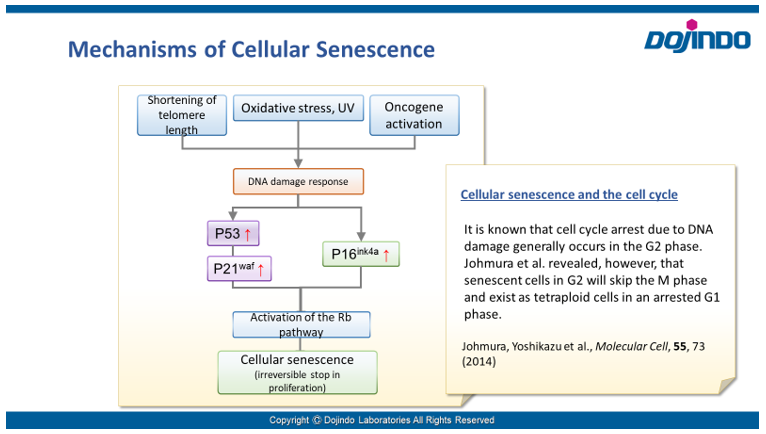|
Cellular senescence is a complex biological process that is influenced by several key factors:DNA damage, telomere shortening, oxidative stress, oncogene activation, and so on. |
|||
|
|||
| Related Applications | |||
Metabolic shift to glycolysis in senescenct cells |
|||
|
|||
 |
|||
| Related Techniques | |||
| Cellular senescence detection | SPiDER-βGal for live-cell imaging or flow cytometry / microplate reader / tissue samples. | ||
| Ferrous ion (Fe2+) detection | FerroOrange and Mito-FerroGreen | ||
| Total ROS detection | Highly sensitive DCFH-DA or Photo-oxidation Resistant DCFH-DA | ||
| Lysosomal function | Lysosomal Acidic pH Detection Kit-Green/Red and Green/Deep Red | ||
| Mitochondrial superoxide detection | MitoBright ROS Deep Red - Mitochondrial Superoxide Detection | ||
| Mitochondrial membrane potential detection | JC-1 MitoMP Detection Kit / MT-1 MitoMP Detection Kit | ||
| Oxygen consumption rate assay | Extracellular OCR Plate Assay Kit | ||
| Antibody/Protein labeling: quick and high recovery | Fluorescein, Biotin, and Peroxidase Labeling Kit - NH2 | ||
Science Note: The Drivers of Cellular Senescence
What is Cellular Senescence?
- Cellular senescence was reported by Hayflick in 1981. It was discovered when pulmonary fibroblasts slowed down their proliferation and eventually ended in cell death after cell passaging had been performed for more than 8 months. Subsequent studies have revealed that cellular senescence is caused not only by telomere length reduction, but also by external factors such as oncogene activation, oxidative stress, and DNA damage.
The induction and control mechanisms of cellular senescence – in which genetic and external factors are intricately involved – have yet to be fully elucidated. However, it has been suggested that the process is closely related to cancer and various age-related diseases, inspiring large amounts of active research into the topic. The development of drugs that eliminate senescent cells in the body (senolytic drugs) is also attracting the attention of researchers as a possible strategy to extend healthy life expectancy.
Assessing Cellular Senescence
- Cellular senescence is controlled by various factors such as cell type and physiological conditions, such as oxidative stress. None of the individual biomarkers that have been identified so far have been deemed to be specific to senescent cells. Therefore, it is desirable to determine and confirm cellular senescence using multiple indicators.
Common detection indicators for assessing cellular senescence include features related to cell cycle progression (DNA synthesis, p16/p21 expression, etc.), features related to morphology (of the cell, nucleus, nucleolus, etc.), SA-ß-Gal activity, DNA damage, oxidative stress (ROS), telomere length, inflammatory cytokines (senescence-associated secretory phenotype (SASP)), and more.
Curious about other Dojindo products? Discover more with our digital brochure! : Cell Function Analysis
Stay informed and connect with us on our LinkedIn page!









